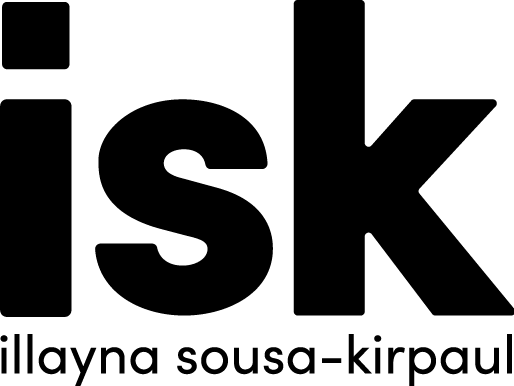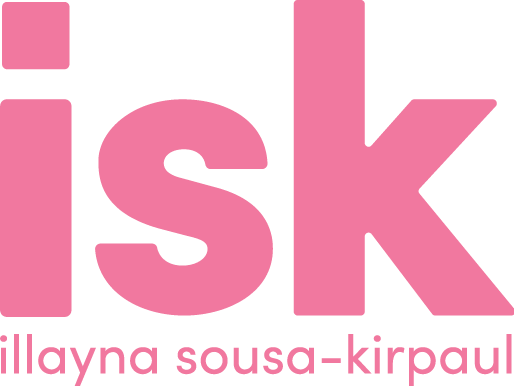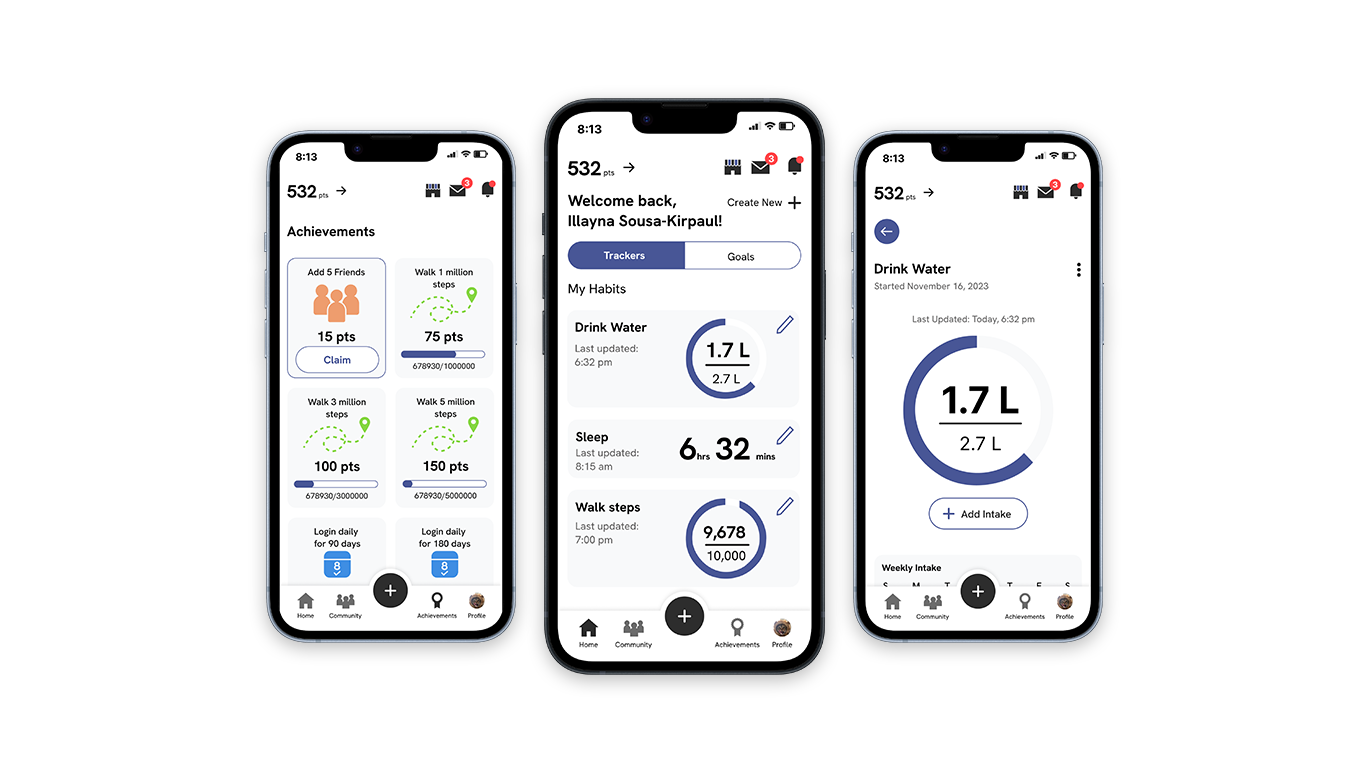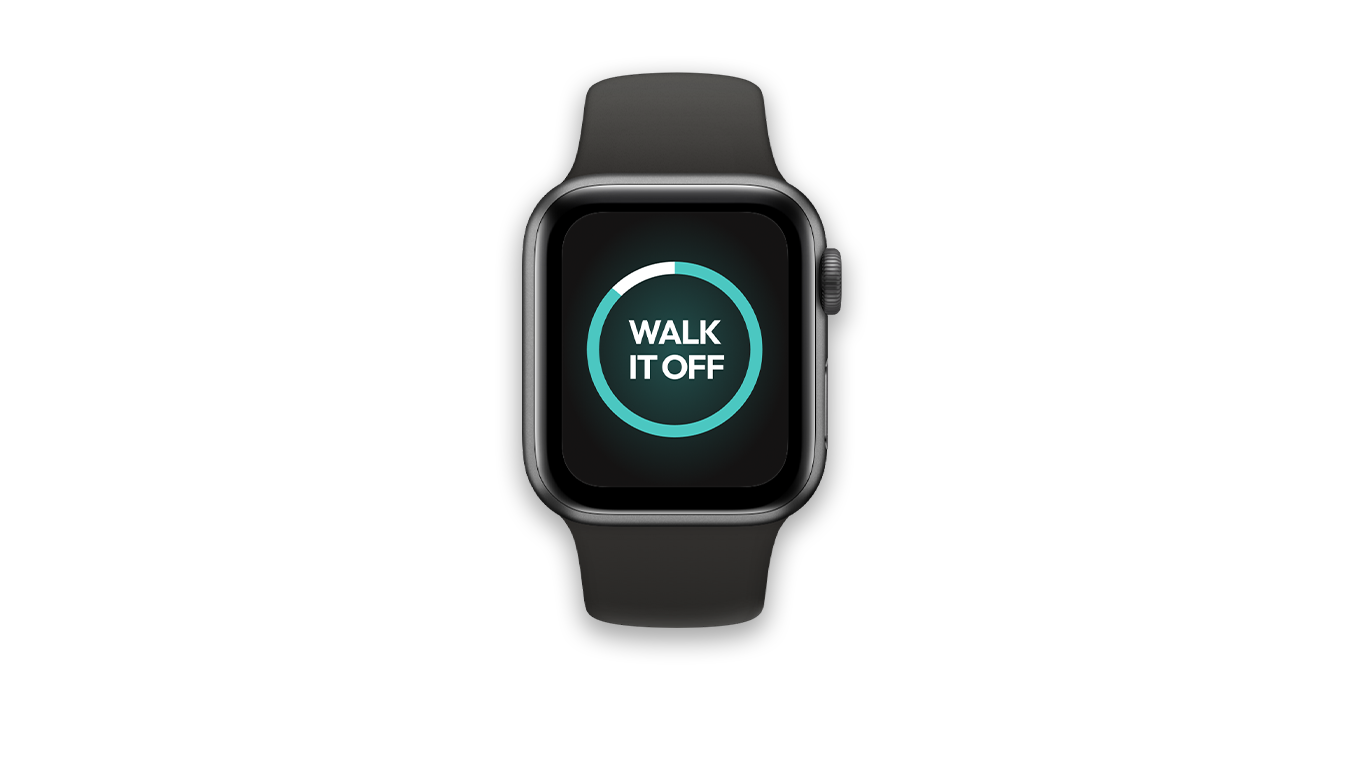Role Student Researcher
Timeline 3 Months
Project Type School Research Project
Project Process Mixed Methods, Competitive Analysis, Heuristic Evaluation, User Research, Interviews, Ethnography
Project Work Individual
Project Milestones Screener, Discussion Guide, Interview Findings, Observation Guide, Ethnography Findings, Design Solutions
Case Summary
This projects focus was to assess the Anthropologie website to explore and frame a problem using a competitive analysis and heuristic evaluation, that would be further explored using other research methods such as interviews and ethnography. Then solved with a new feature or design that would improve the experience of the user and bring value to the business
Through this study I explored a problem in the accounts and loyalty program that was not providing users with an experience comparable to competitors and lacked the elevated experience users expected from the brand.
For both the interviews and ethnography a research plan including a screener and discussion guide, raw data, research report including analyzed data and presentation were all delivered.
Key Findings
• Users are looking for a personalized experience that makes them feel connected to the brand and business.
• They want to know and see they are getting rewarded for being loyal and that there is a goal to be working towards.
• Through interviews it is clear that users enjoy shopping more on sites when brands show their appreciation through loyalty programs
• The current loyalty program is lacking and unnoticeable to current users, making users uninterested in Anthropologies loyalty program online
• There is opportunity to make Anthropologies loyalty program more visible to their users and audience.
• Creating visibility in the design of the loyalty program will show users and customers that their loyalty is important and appreciated.
About Anthropologie
A unique atmosphere of curated houseware and clothing brands for Women. A more mature and elevated line under the URBN brand.
Offers a way to shop multiple different high-end to luxury clothing & accessory brands in one place. Higher end retail with sustainability practices.
Where I Started
Competitive Analysis
I conducted a competitive analysis between Anthropologie, Simons, and Urban Outfitters to examine the User issues by looking at the: Business, User context, User heuristics
To frame the problem I kept in mind 3 business goals; revenue, reduce costs, and reputation, to ensure that the problem at hand would be valuable to solve to both user and business.
A user profile was completed to ensure the issues of the major user(s) were being looked at.
1. Primary User | Working Adult: Adult Women affluent in their job who want to easily make it from the item to the checkout and save time.
2. Secondary | Stay at Home Parent: Adult Women taking care of the home who want to have the experience of shopping without the hassle of in-store.
3. Tertiary | Student: Young adult on a budget, maybe part-time, who want to save money while shopping their favourite brands
Overall, these users want the ability to do their shopping from anywhere at any time without restrictions. Online shopping can be a last resort for user’s who are busy. For the User shopping can be hectic, we should simplify their needs.
Tasks & Jobs To Be Done
During my research, I scanned through the website and played out tasks users would completing.I looked at 4 tasks the Anthropologie user will do on the site to get a closer look on where the issues may be persisting.
The main tasks users take on were: Find an item & make a purchase, Access account/loyalty program, Use styling services, Start a return/exchange.
With these tasks now uncovered, I could focus on the usability heuristics that followed each task.
Heuristic evaluation
I looked into 7 out the 10 usability heuristics to find where our competitors are doing well and what Anthropologie could be doing to improve.
A heuristic evaluation allowed me to find design and usability problems within the website and provide opportunities based on my findings. The 7 followed were: 1. Visibility of system status, 2. Match between system and reality, 3. User control and freedom, 4. Consistency and standards, 5. Error prevention, 6. Recognition rather than recall, and 7. Flexibility and efficiency of use.
Opportunities FOR INNOVATION
From my research during the heuristic evaluations, i discovered 3 problems that could be improved on the Anthropologie website to improve user experience. But, only 1 problem felt most important to the business and user.
Task: Access account and loyalty program
Problem: The process for this task is not smooth or consistent to other competitor programs
Opportunity: Improve the functionality of accounts. The user should easily recognize how to create an account and join the loyalty program. This can increase the reputation and allow for more customers to return, overall increase revenue.
A LOYALTY PROBLEM
After presenting my findings it was decided to focus on the problem within the accounts and loyalty program. This problem was deemed to be important as its a function that allows the User to access orders, favourites, Wishlist's, and personal information, and goes hand-in-hand with the ability to be apart of the loyalty program.
Further Research Needed!
To start exploring the problem deeper, interviews are needed.
Through interviews I would be able to gain insight from the target User’s point of view. It is important that we uncover the needs, priorities, and behaviours of this audience to point out the definitive problem that needs to be solved and how it can be solved.
To start plan my interview research I came up with my hypothesis and research questions from what i've learned in the previous stage but also what I want to learn from conducting interviews
Hypothesis
1. The loyalty program is not comparable or consistent to our competitors
2. Users have an issue knowing if they are signed up to the loyalty program
3. Users must rely on their mobile device to sign into their account
4. Users prefer to shop without an account
Research Questions
1. How do Users prefer to shop?
2. Why do Users create accounts? And further, join loyalty programs?
3. What do Users expect from these services?
4. How are Users completing this task (access accounts and loyalty program) ?
5. What pain points are User’s facing during the task (access accounts and loyalty program)?
The Interview Plan
To understand how the interviews would be conducted I followed a plan consisting of the method, ethics, timeline & budget, roles & responsibilities, assumptions, and risks & mitigations.
5 one-on-one interviews would be conducted, each interview should take 1-hour (60 min) to complete. To gather direct information on the experience within the account and loyalty program service Anthropologie supplies. It will allow to make firsthand connections with the participants and gain meaningful in-depth insights.
ETHICS
I had to ensure that the privacy of my participants and data would be secure and anonymous to create a candid environment for the participants to think and talk about their experiences.
Screeners, consent forms, informing of rights and how the data will be treated during this study were important to incorporate into this plan. This protected not only the participants but also me and the data that will be used.
All raw data was deleted by December 11, 2024
TIMELINE & BUDGET
The timeline for this project was made into 5 weeks. This being a school project, there was no budget given and no incentives to recruit participants. All was done through screening for participants and asking for help as a student.
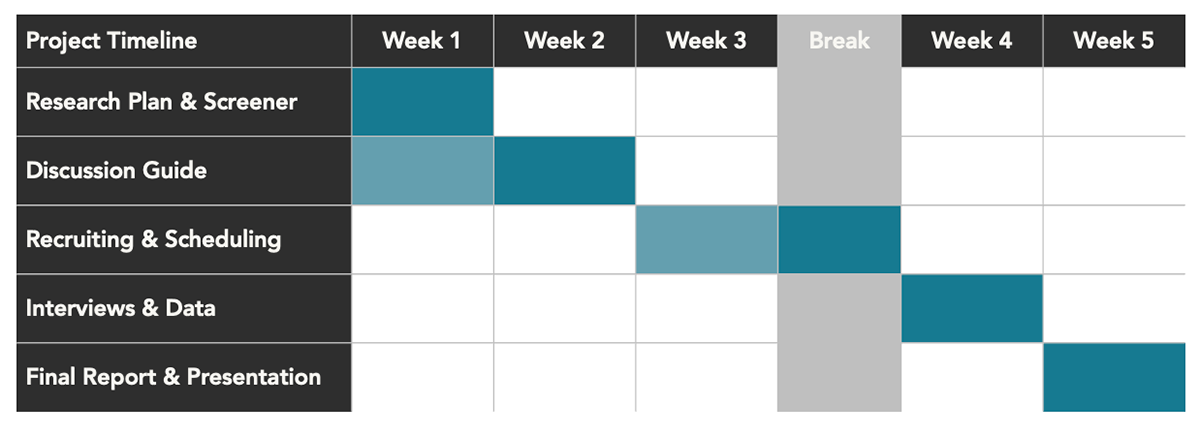
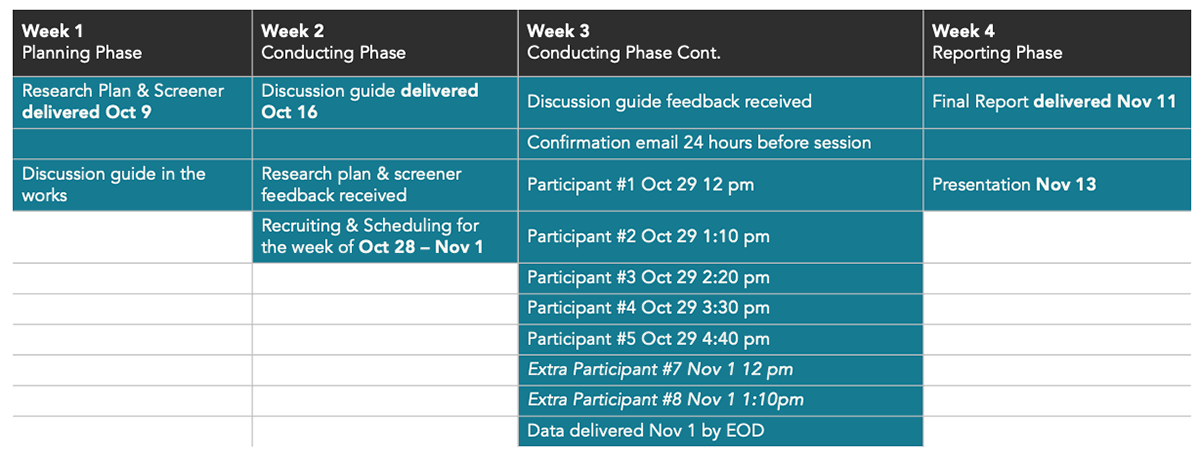
Role: Researcher (Illayna Sousa-Kirpaul)
Responsibilities
• Develop research plan, screener, discussion guide, final report & presentation
• Hold an interview for at least an hour
• Recruit, manage, schedule, and interview interviewees
• Analyze and present data
Role: Client (Yvonne Shek)
Responsibilities
• Brief us in about what they are looking for and project goals
• Approve of screener and research plan
• Review interviews and data for feedback
Role: Participants
Responsibilities
• Answer questions openly
• Show up for scheduled day and time
• Be prepared for interview
Assumptions, Risks & Mitigations
I had to assume based on what i already researched that there was a problem with the accounts and loyalty program in the anthropologie website. Further assume that 5 participants would be recruited and i would be recieving meaningful data from it to prove my hypotheses and lead to solutions, but also assist me in the next steps of conducting ethnography.
Risks
1 | No show Interviewees
2 | Technological difficulties during Interviews
3 | Unprepared and unfit participants
Mitigations
1 | Send confirmation emails 24 hours ahead of Interview. Have 2 backup interviews setup
2 | Test recording and sound before. Have backup recording software on standby
3 | Prepare a screener to ensure participants fit the target user. Have extra pen and paper for task analysis.
Let's Recruit
Before I could start interviewing, I had to make sure I was interviewing the right people so that my data would be true to my study and have actual value to the problem, my hypotheses, and my research questions. My recruiting process was done both online and in-person using a screener to remove participants that do not fit the target user. I recruiting 5 participants + 2 others incase of cancellations or no shows.
The most challenging part of this process was recruiting for me. Many people do not fit the target user even when you think they do. It later causes more challenges when I had to worry about cancellations or no shows, even with extra recruits there is still worrying as this was a project I could not provide incentives for, I really had to rely on the good faith of others.
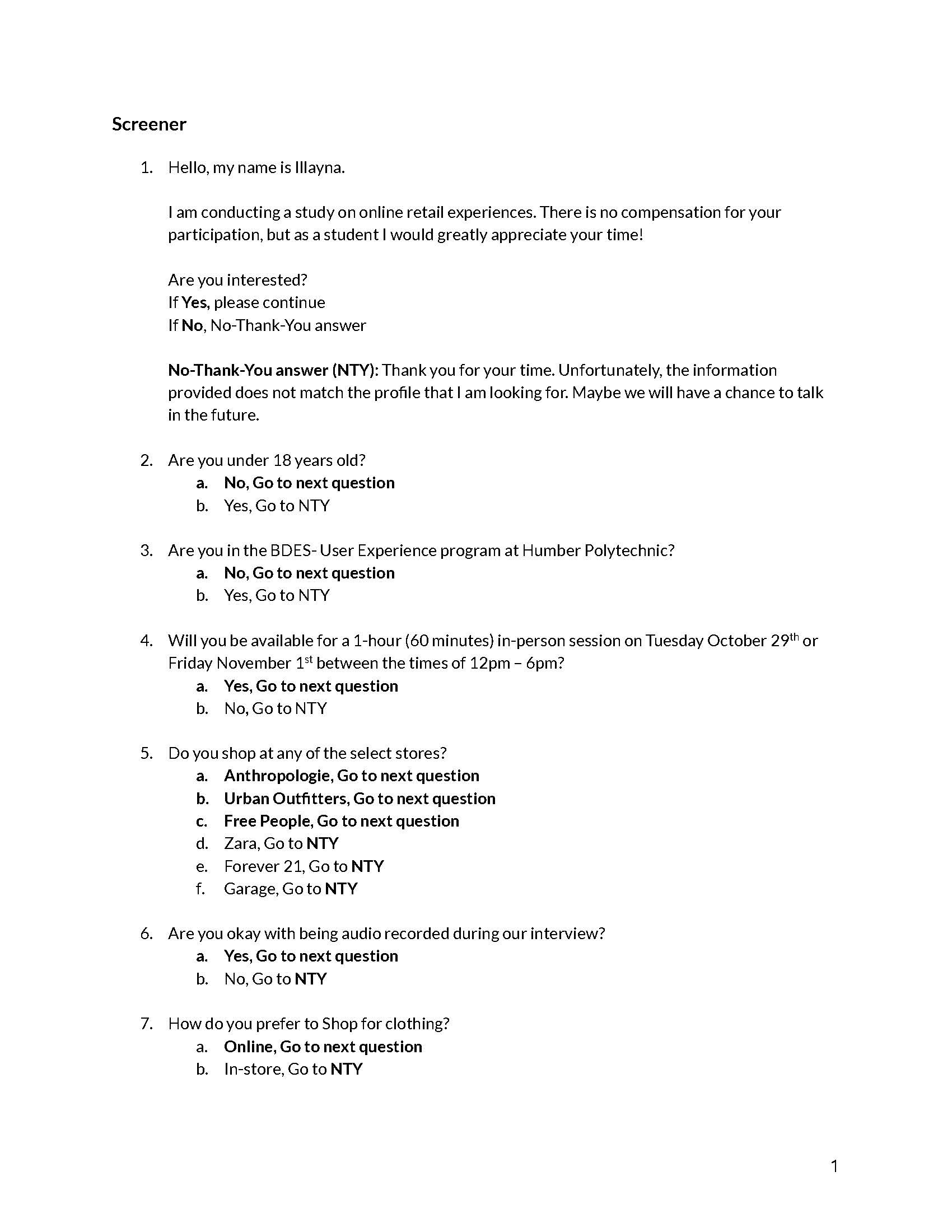
Screener questions
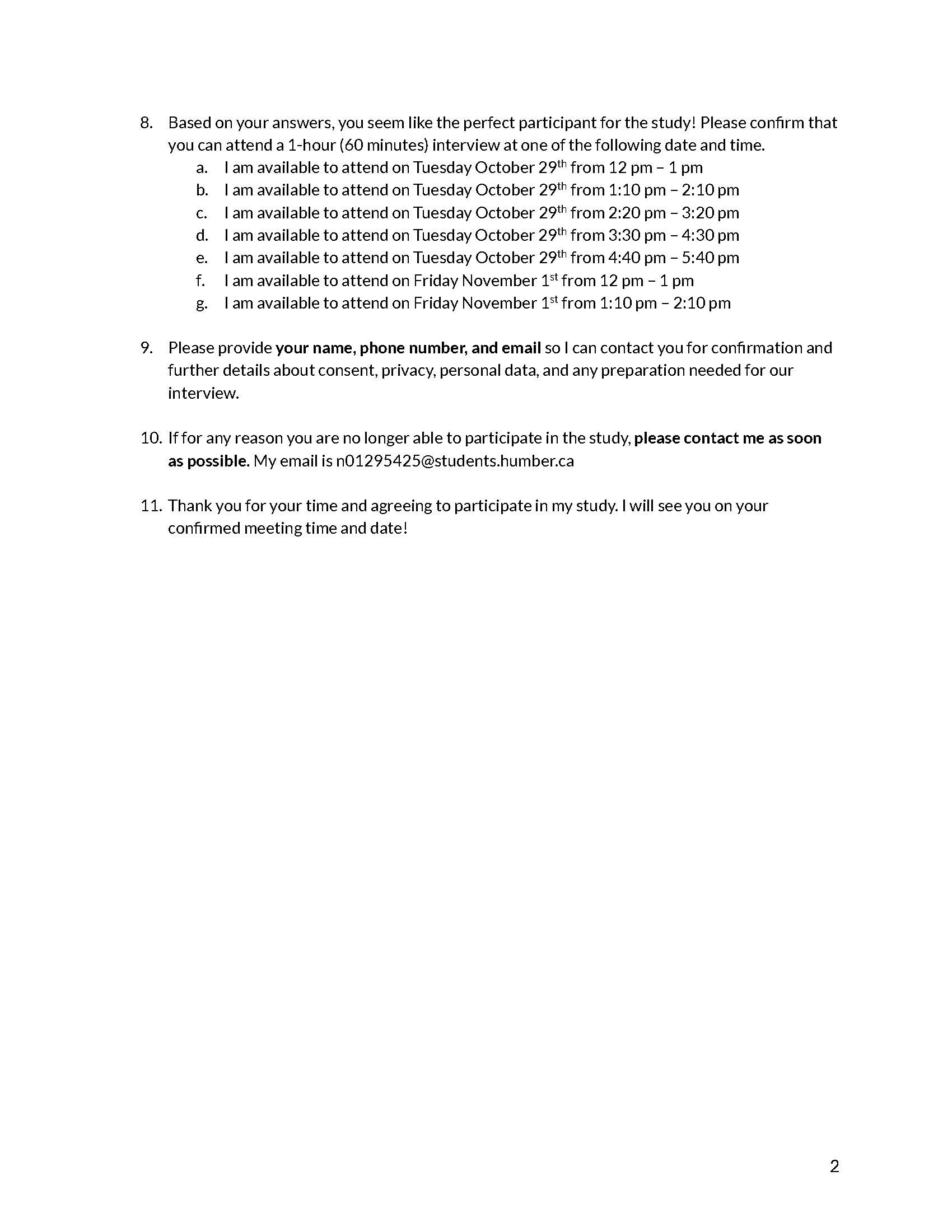
My challenge on recruiting was also in scheduling. My first interview timeline was changed after it became too difficult to fit people in my initial scheduling. I was faced with the reality that I did not think about my target user being busy with work in the time slots (shown above) I gave. I had to move some time slots to be later in the evening after realizing my mistake.
What To Discuss?
A discussion guide is a semi-structured script that will replicate the interview process and probe questioning for rich qualitative data. Will include the introduction and consent, objective, warm-up questions, main questions, and the debriefing portion of the interview.
To further assure that what I get from these interviews is meaningful and thick data that can be used to solve the problem, I wrote a discussion guide. This guide not only helps me gain data that can prove my hypotheses and answer my research questions, but will help me stay on track of the topic and allow for me to listen for important topics the participants may talk about.
Also incorporated into the interviews was the task analysis. The task analysis is a drawing activity during the interview where the participant can draw/write out how they complete the given task of signing up or accessing their account and loyalty program on any online shopping experience. The purpose of this was to gain insight on the user's journey to see what they experience and also expect from an online shopping experience.
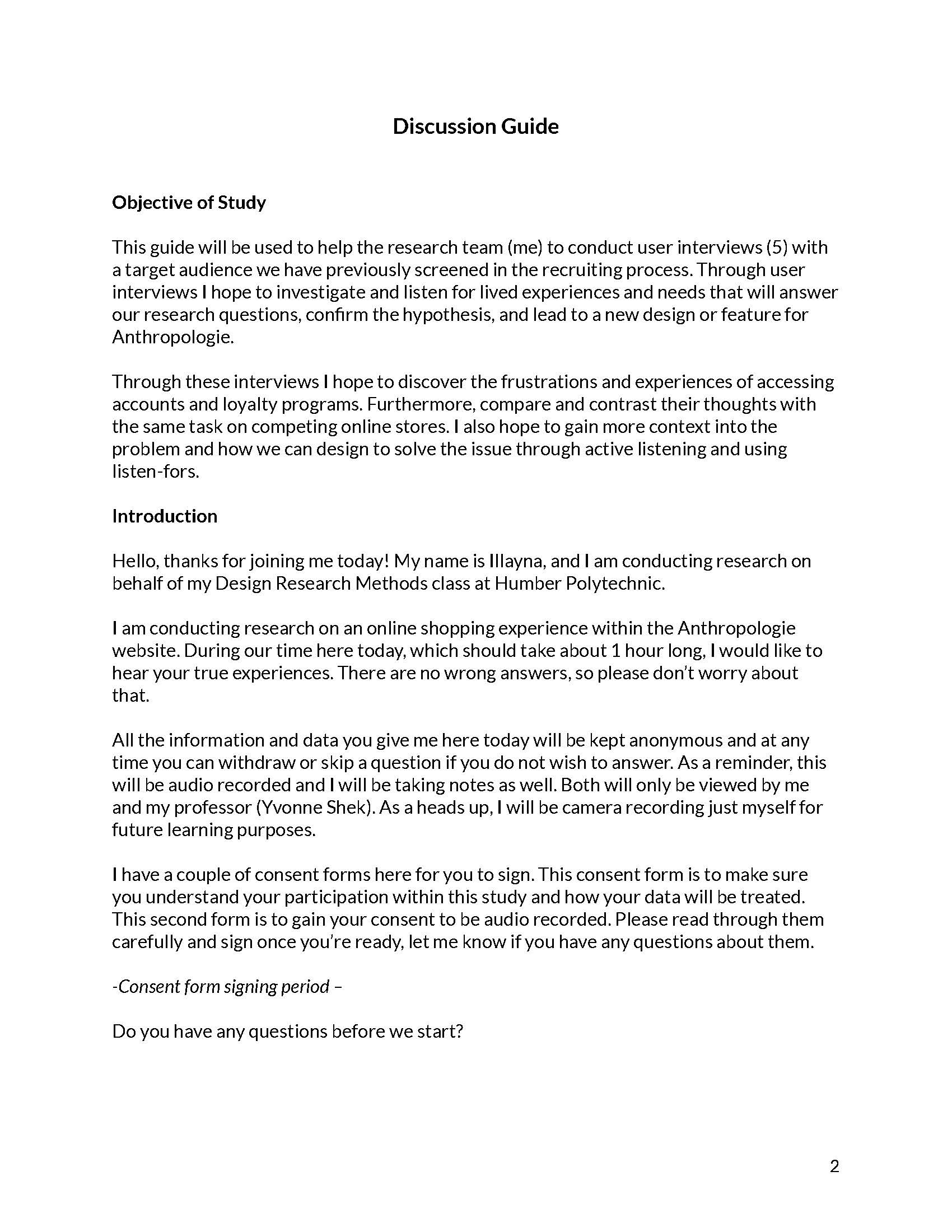
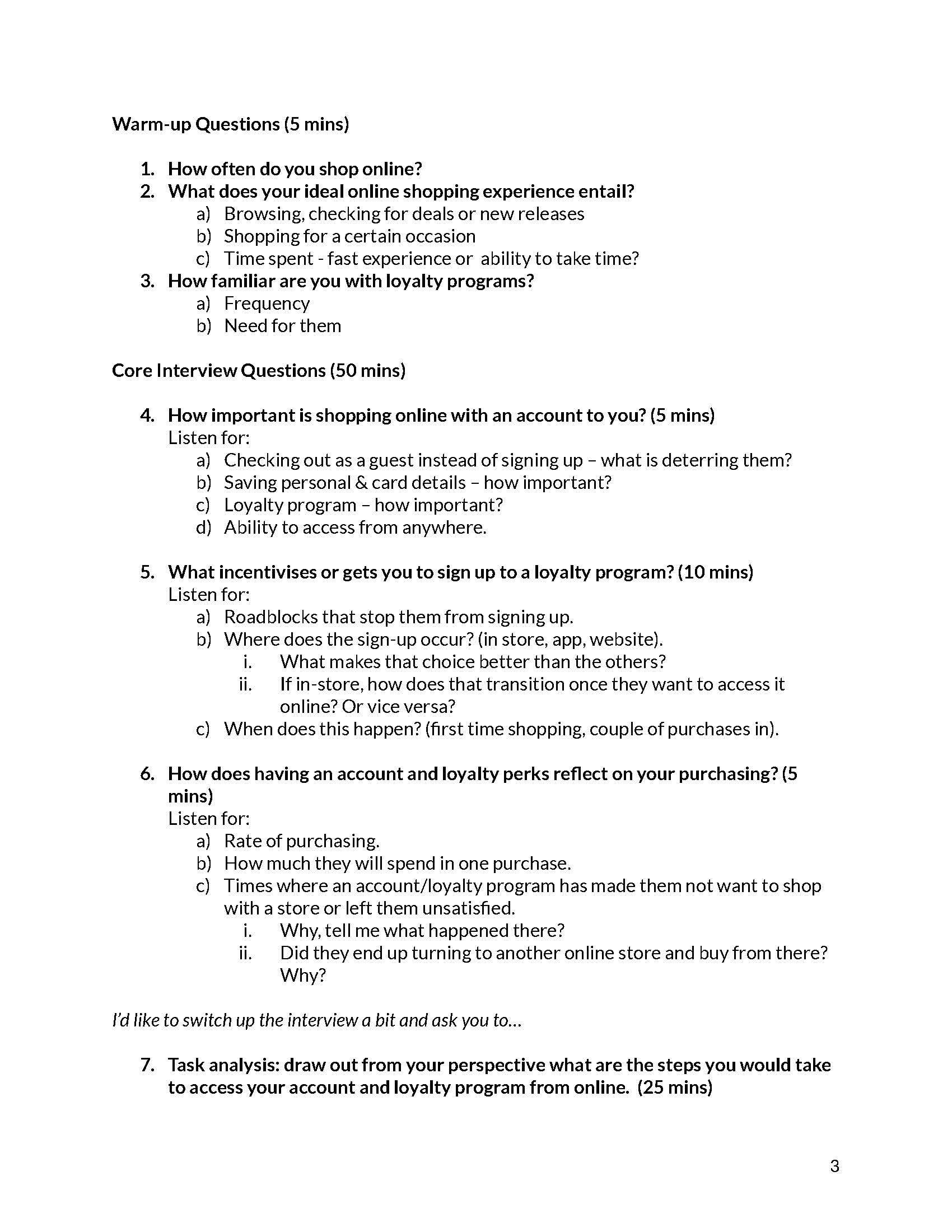
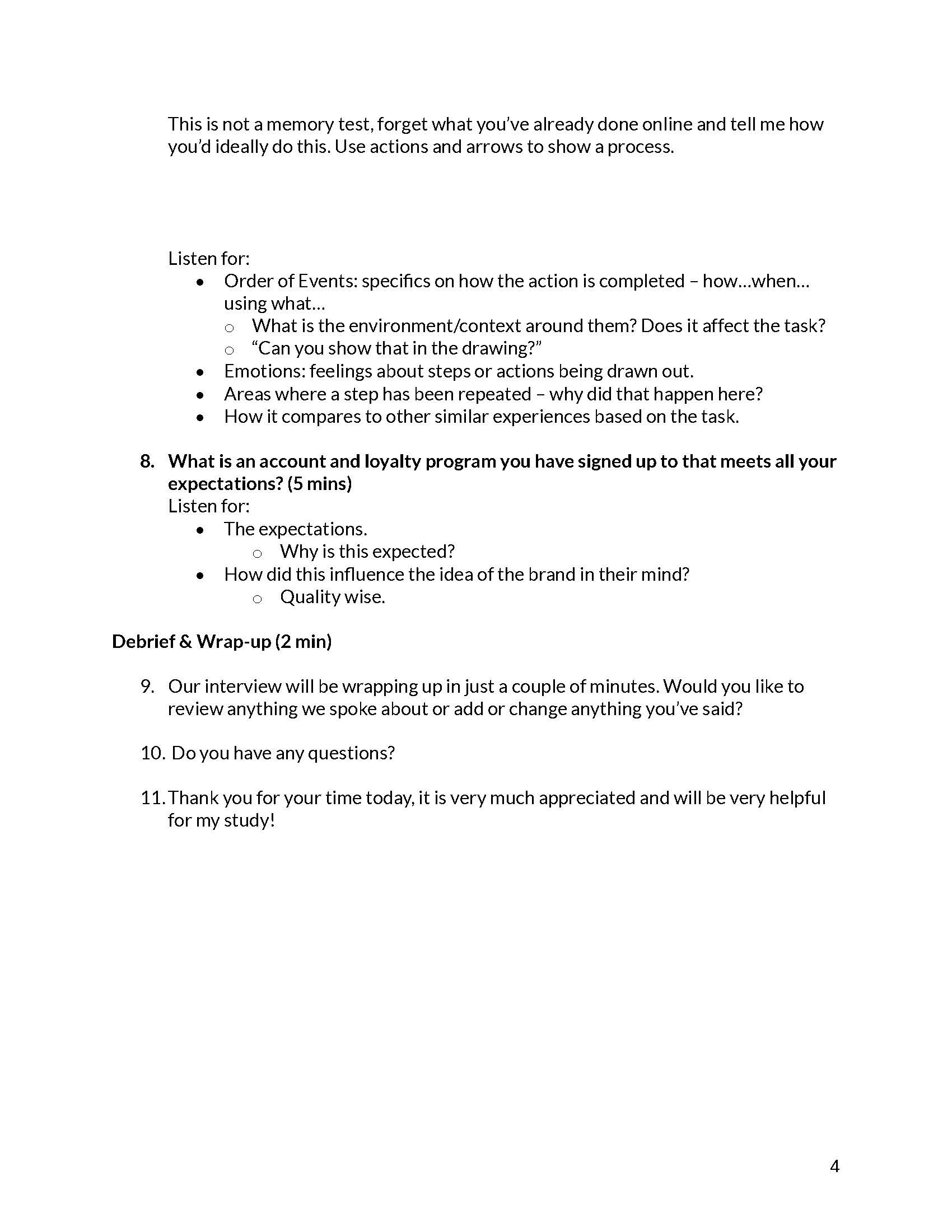
Interviewing
For ethical and consent purposes I cannot share any interview recordings or raw data.
After recruiting and scheduling in participants, I conducted five 1 hour interviews that were audio and note recorded for later analyzing.
My first interview was nerve-racking, having it be the first time I've done this it was hard to keep the discussion going while also note taking and thoughtfully listening. As I continued doing the rest of them, I found myself become more confident and it became easier to listen. I also had to worry about other factors like internet or communication issues for my online interviews. Further, assuring that all consent forms got signed before starting, time being kept, and recording failures.
Another challenge I faced while conducting the interviews was conducting the task analysis over an online meeting format. This mean't I had to rely on my participants to be prepared with their own tools to complete the tas
After conducting my interviews, I felt proud that I was able to conduct the interviews successfully but also was unsure about my findings. It wasn't until I analyzed the data through affinity mapping that I was able to see my key findings and move onto creating a persona and journey map based on my data.
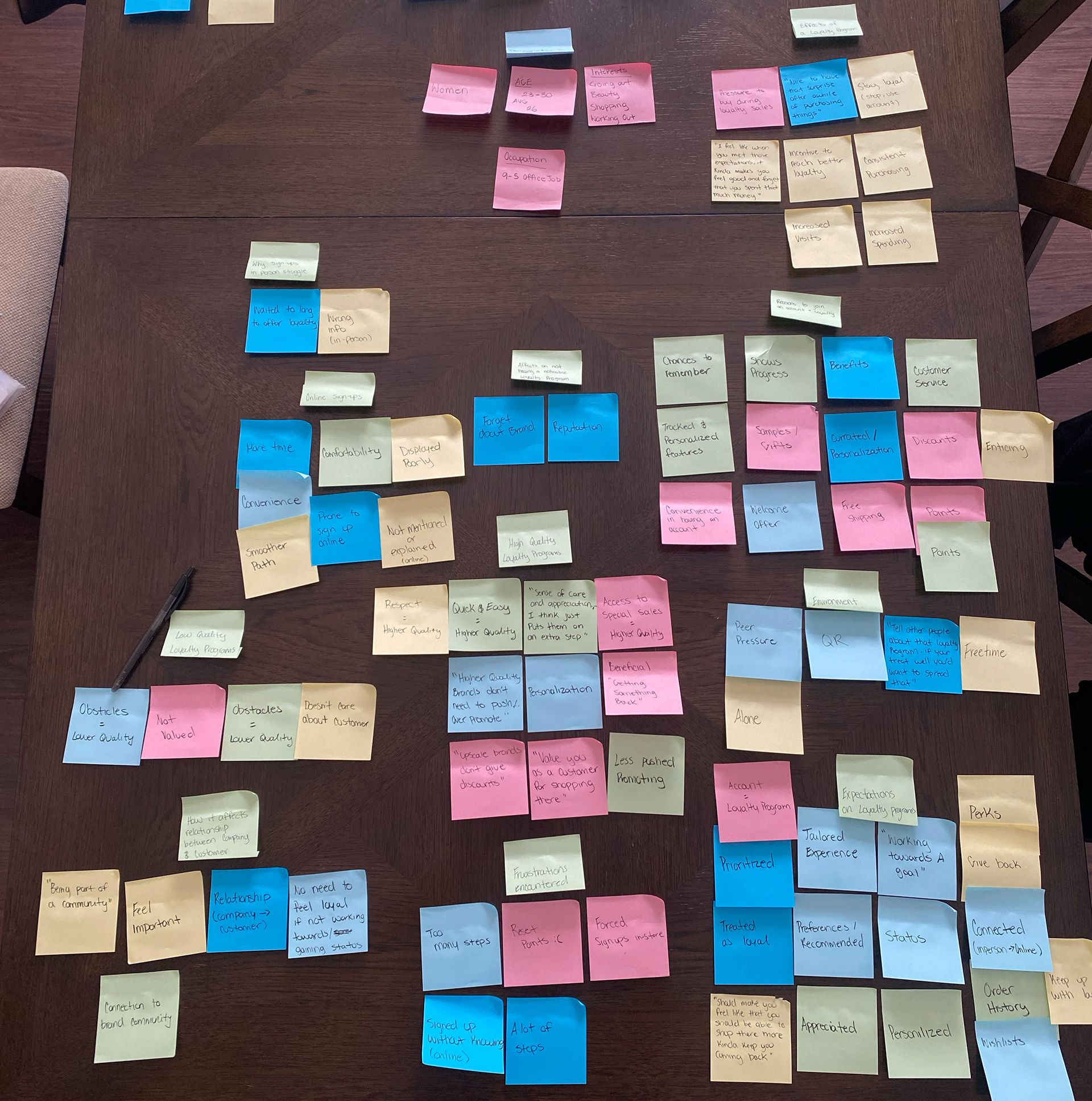
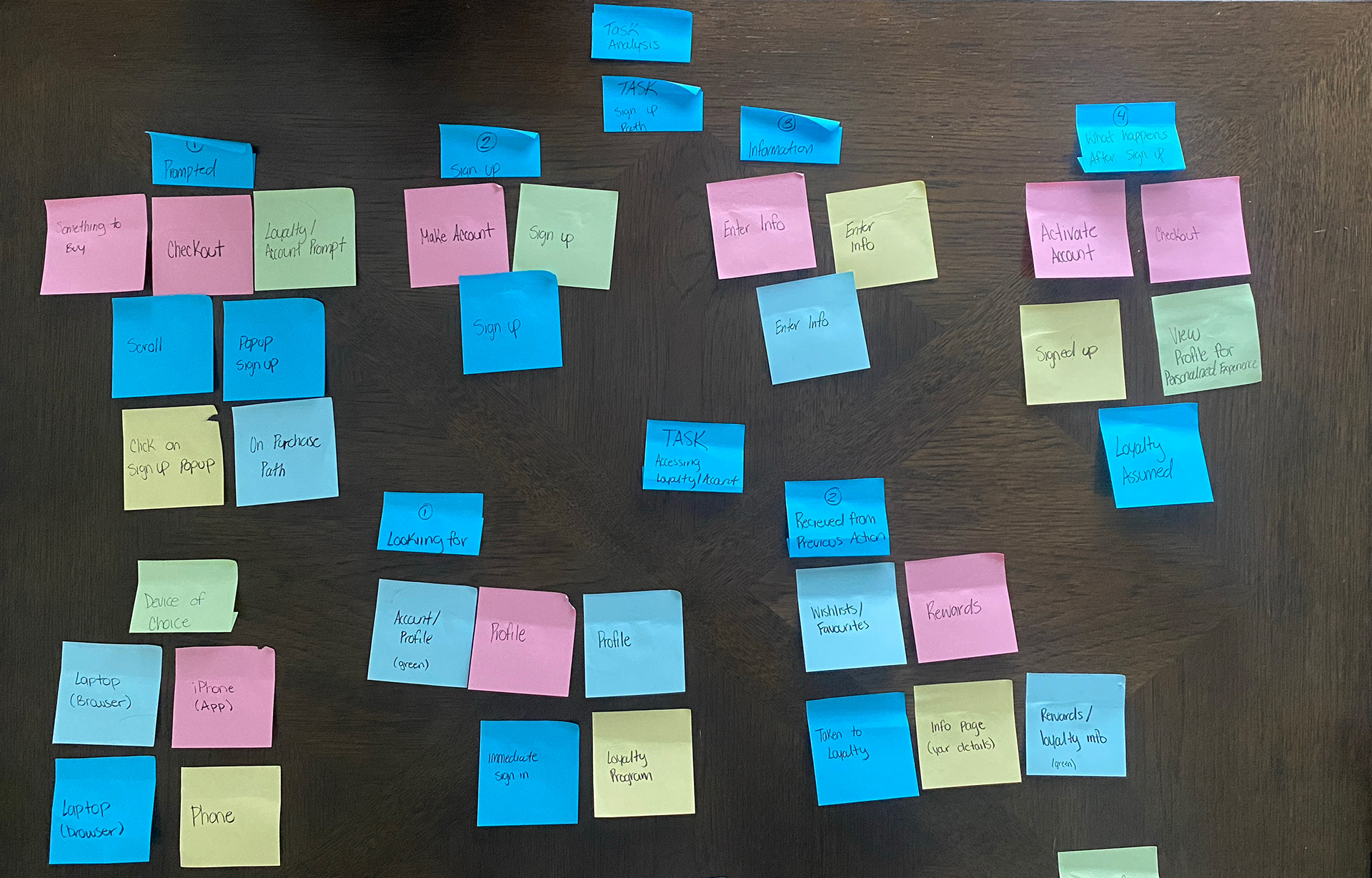
Key Interview Findings
What Do My Key Findings Mean?
Users do not want an experience that entails obstacles, or over-promoting with constant reminders of promotions. Instead, users are looking for a personalized experience that makes them feel connected to the brand and business. They want to know and see they are getting rewarded for being loyal and that there is a goal to be working towards.
By conducting 5 interviews and successfully collecting and analyzing the qualitative data, I have discovered pain points from our users but also positive experiences. These opportunities can be expanded upon, and create a more positive experience online that will satisfy both user and business needs.
Insight on how our users complete and experience the tasks within an account and loyalty program has shown where the opportunities lie. Continuing our research into these opportunities can increase revenue and reputation for the business. Further, keeping users returning and positively increasing how users see the quality of Anthropologie.
Next Steps? Ethnography!
Ethnography research was conducted to observe how customers and employees complete their JTBD (jobs to be done), tasks, and the context within the frame of the loyalty program and in an Anthropologie store location. During the ethnography session I observed the setting and interactions.
For this part of the research I reframed my hypotheses and research questions to match what I wanted and hoped to learn from conducting ethnography. This mainly came from what I learnt during the interviews, I wanted to gain more data on the experiences our users go through. To do so I had to come up with a hypotheses and research questions that would allow me to observe what I needed to.
Hypothesis
1. The experience customers are having with the loyalty program is tedious and uninteresting
2. Relying on the sales associates to bring in loyalty members has the opposite effect of effectiveness
3. Not enough is being done to incentivize or draw in customers to the loyalty program
4. Customers are not seeing a personalized experienced when first signing up
Research Questions
1. What is being done to incentivize customers in-person to join the loyalty program?
2. Is there a more effective and efficient ways to get sign-ups.
3. How are users behaving when asked about the loyalty program (checkout).
4. What pain points are User’s facing during the task (access accounts and loyalty program)?
5. How can I transfer a physical interaction to a digital one?
I wanted to learn how customers interact with the loyalty program and their behaviours towards the loyalty program. It also felt important to learn how the Anthropologies location displays the loyalty program and how it's talked about towards the customer.
Having this scope mean't I was looking for where the problems lay from an in-person point of view rather than online; where my focus was during interviews. Seeing the problems in-person would allow me to understand how to create an online design solution.
The Ethnography Plan
I needed to hold a 1-2 hour observation session at an Anthropologie to capture graphics & wording, any announcements made over the speaker, checkout and other counters, and kiosks/self checkouts (if applicable) for the loyalty program. I also wanted to observe the environment, what the employees are doing and how , how customers are behaving towards the loyalty program when asked about it or asking about it themselves, and team dynamics (differences between what each are doing for the loyalty). I also planned to intercept customers or employees but it did not become relevant during the research.
ETHICS
For the ethnography i did not use participants to observe but rather just me observing the store. I prepared an information letter for any curious employees who wondered what I was doing. All capturing between photos and notes, kept the same privacy and data storage ethics of the interviews and no identifiable photos were captured of customers or employees.
TIMELINE
ROLES & RESPONSIBILITIES
Role
Researcher (Illayna Sousa-Kirpaul)
Responsibilities
Develop research plan, observation guide, final report & presentation
Observe and watch for during the session
Be prepared with info letter and tools
Analyze and present findings
Role
Client (Yvonne Shek)
Responsibilities
Approve of topic and observation guide
Be present to review findings and opportunities
Provide feedback for next steps
RISKS & MITIGATIONS
Risks
1. Phone dying or running out of battery & running out of space
2. Questioned about what I’m doing from employee or security
3. Bias – site control
Mitigations
1. Have device fully charged
1. Bring portable charger
1. Have notepad and pen on standby
1. Organize phone space before getting to location
2. Act as a normal shopper
2. Information letter on standby if needed
3. Employees will not be made aware of research unless necessary
What To Observe?
Along the same principles of the interview research, I had to create a guide to get an inside view of what customers are facing when interacting with the loyalty program. I looked for behaviours and perceptions that stem from their surroundings, focusing on physical elements displayed in-store of the loyal program and how it is treated during the checkout process.
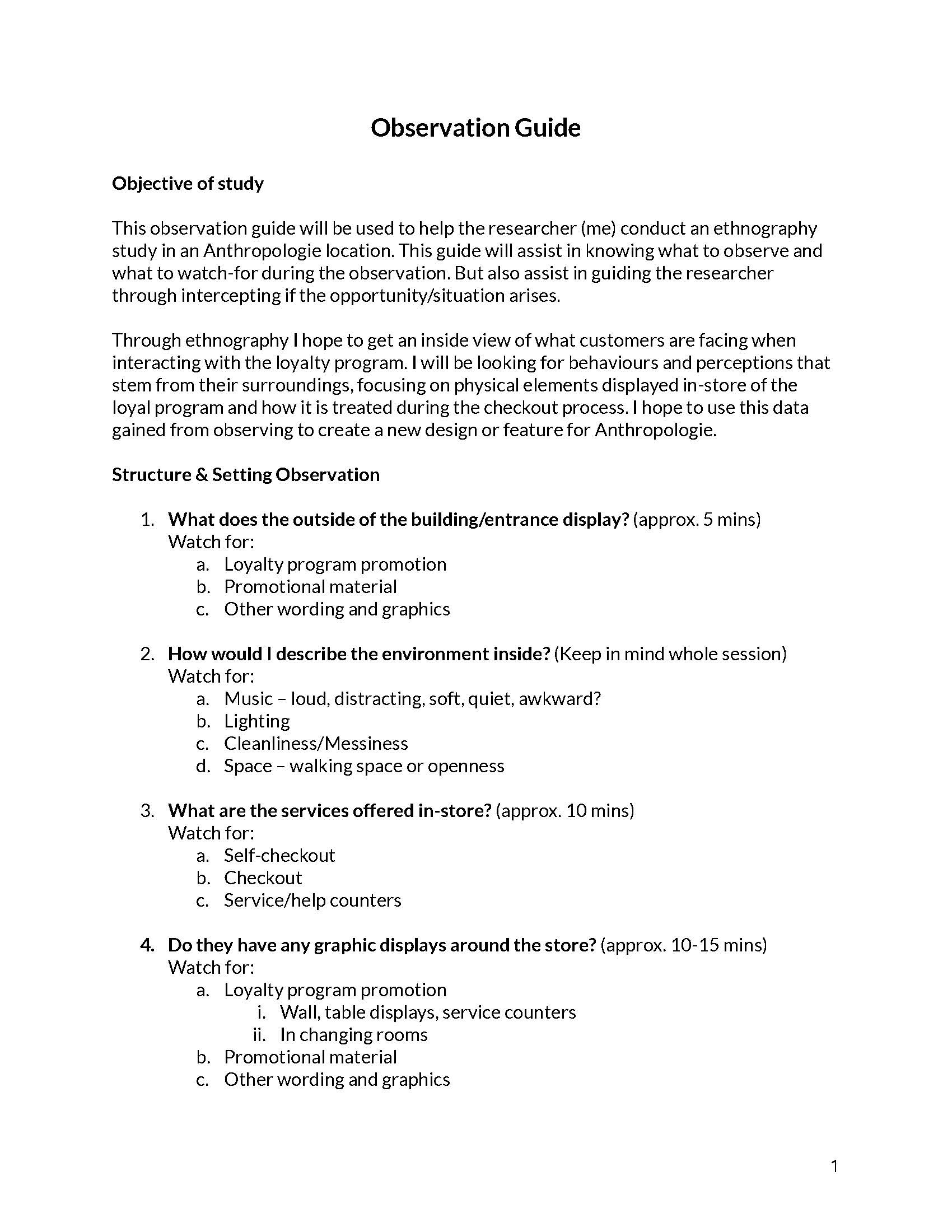
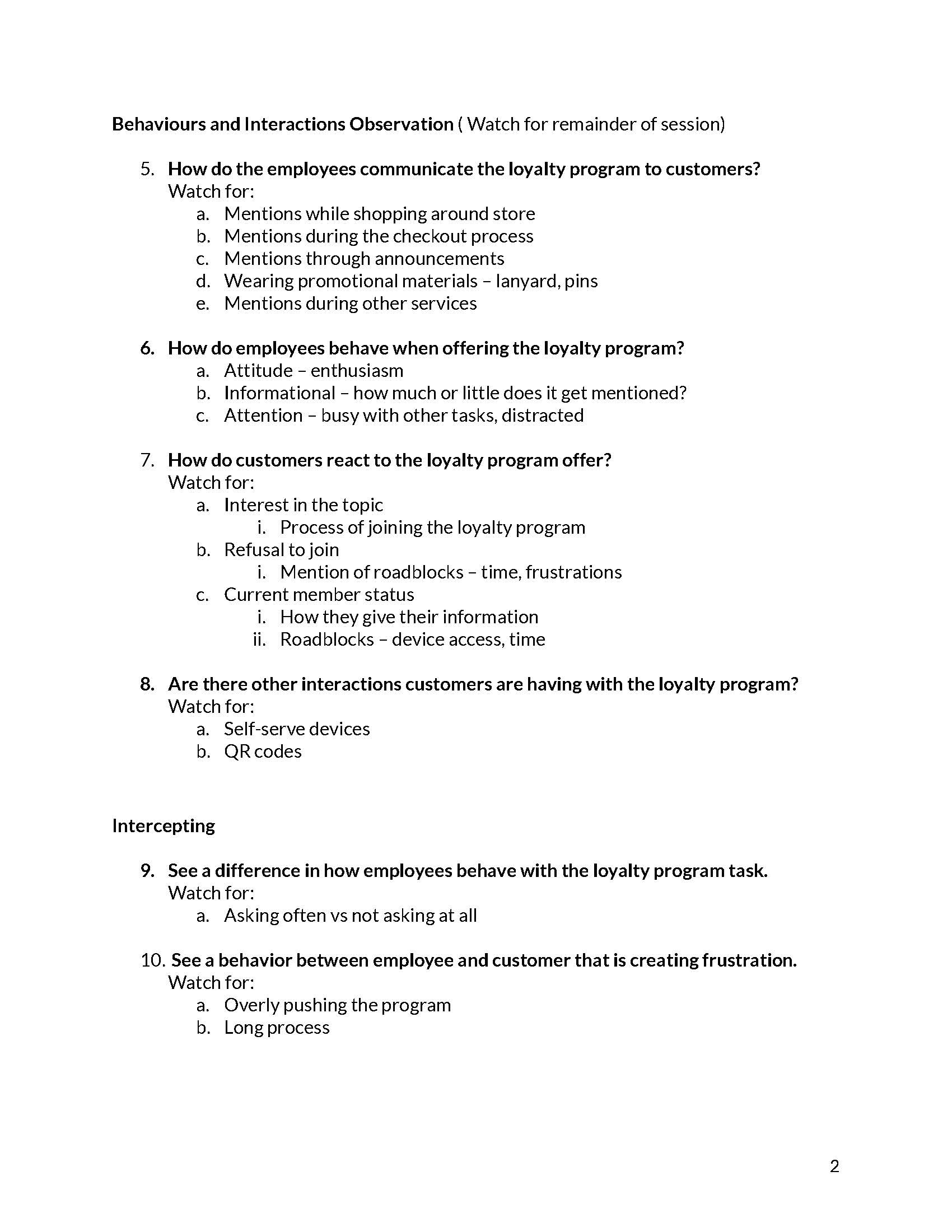
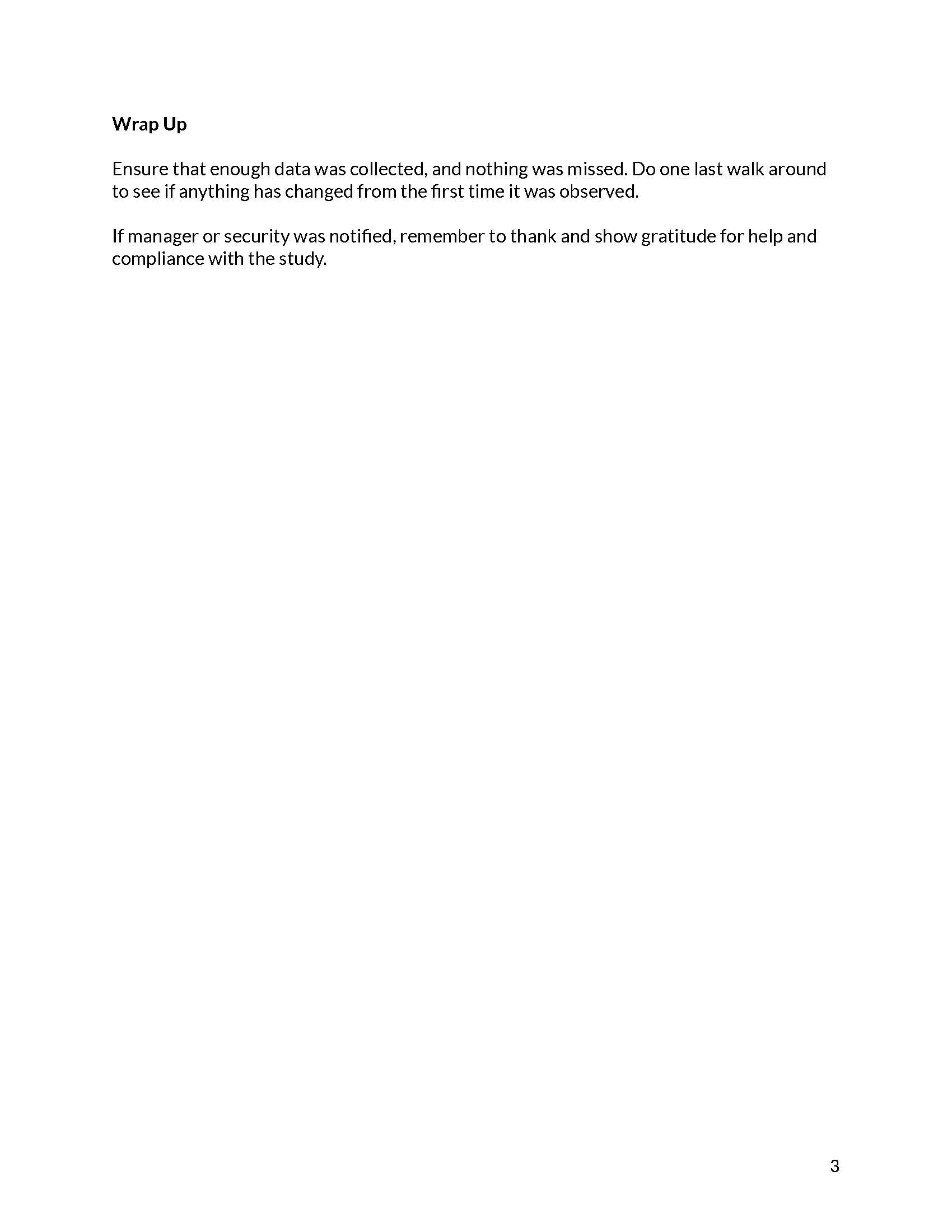
Let's Observe!
For ethical and consent purposes I can only share a select amount of images.
I observed one location on 761 Queen St W, Toronto on November 24.
Experiencing an ethnography for the first time was more overwhelming than I thought it would be. I used my discussion guide for general guidance through the process. A challenge I faced here was not knowing if what I captured was enough data or if I needed to observe other aspects.
My main finding here was that the loyalty program was not mentioned at all through the entire store. Finding that made what I was trying to observe even more difficult, I thought if there was nothing here to observe how was I supposed to gain data?
My solution to this was to capture areas where I thought the loyalty program should be mentioned, so that I could show how having aspects of the loyalty program would create a better experience for our users.
Ethnography Key Findings
Through this I could create a type of journey map that would show what a customer does when visiting the location and how their visit could be improved by mentioning of the loyalty program.
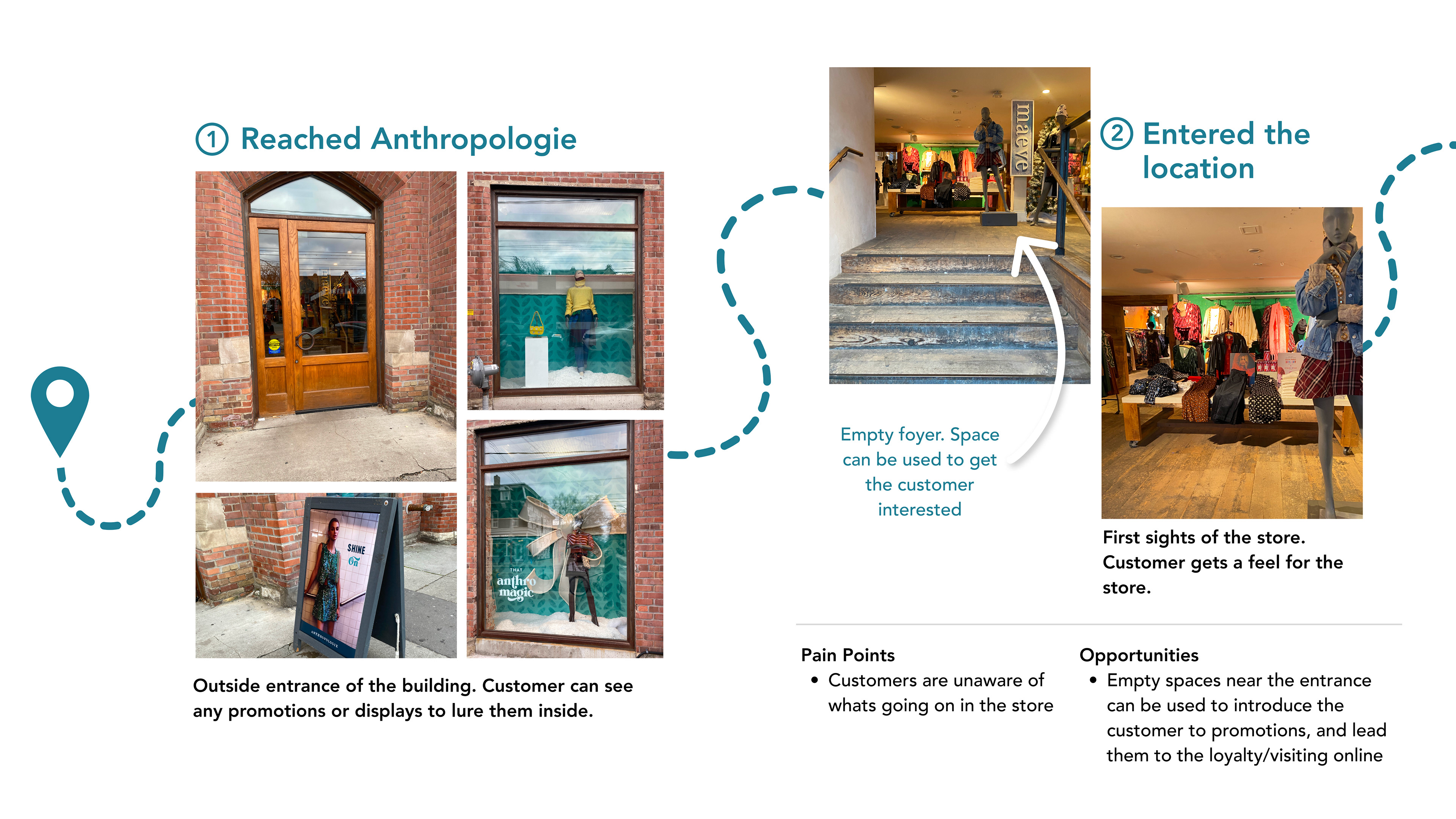
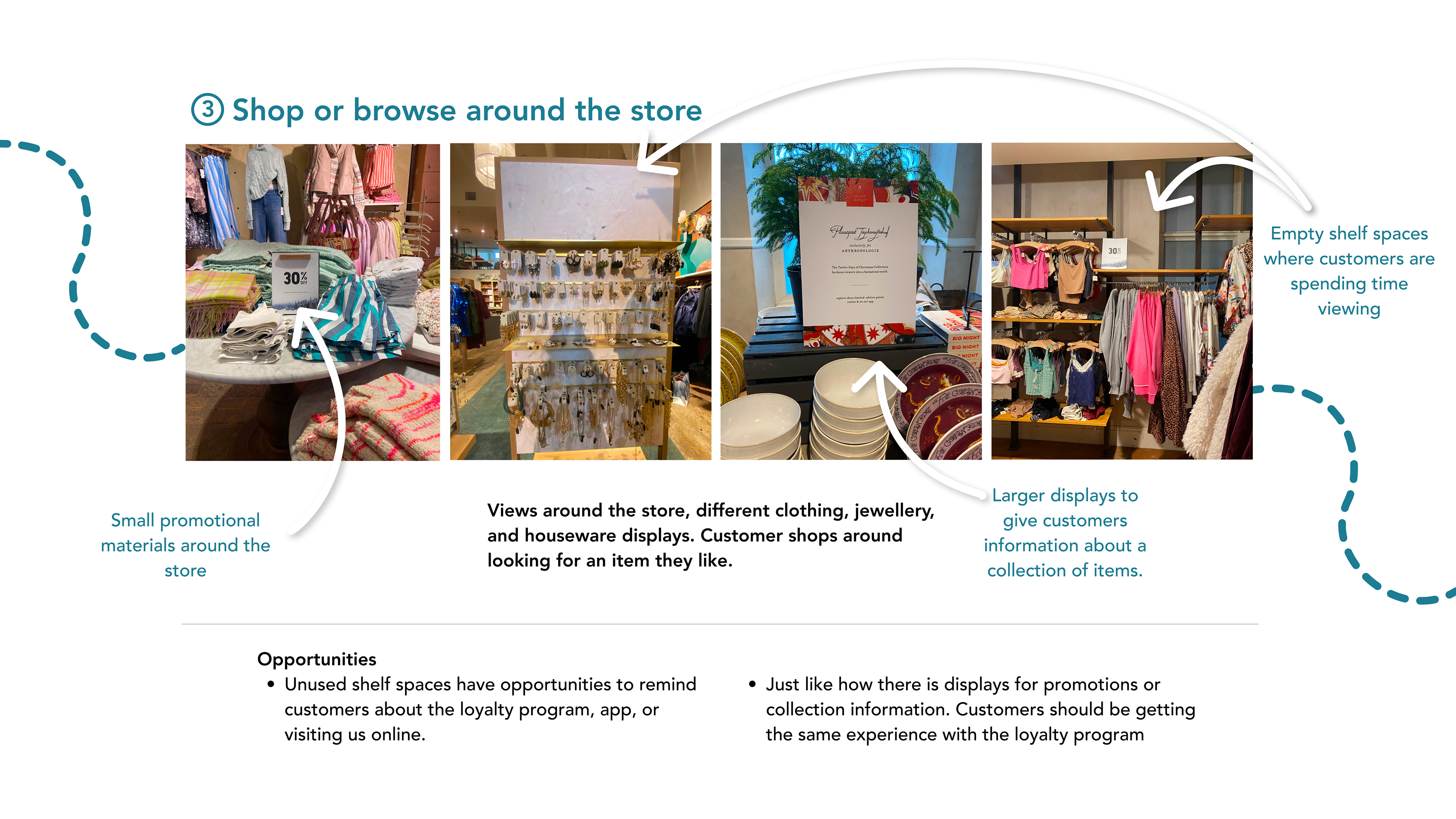
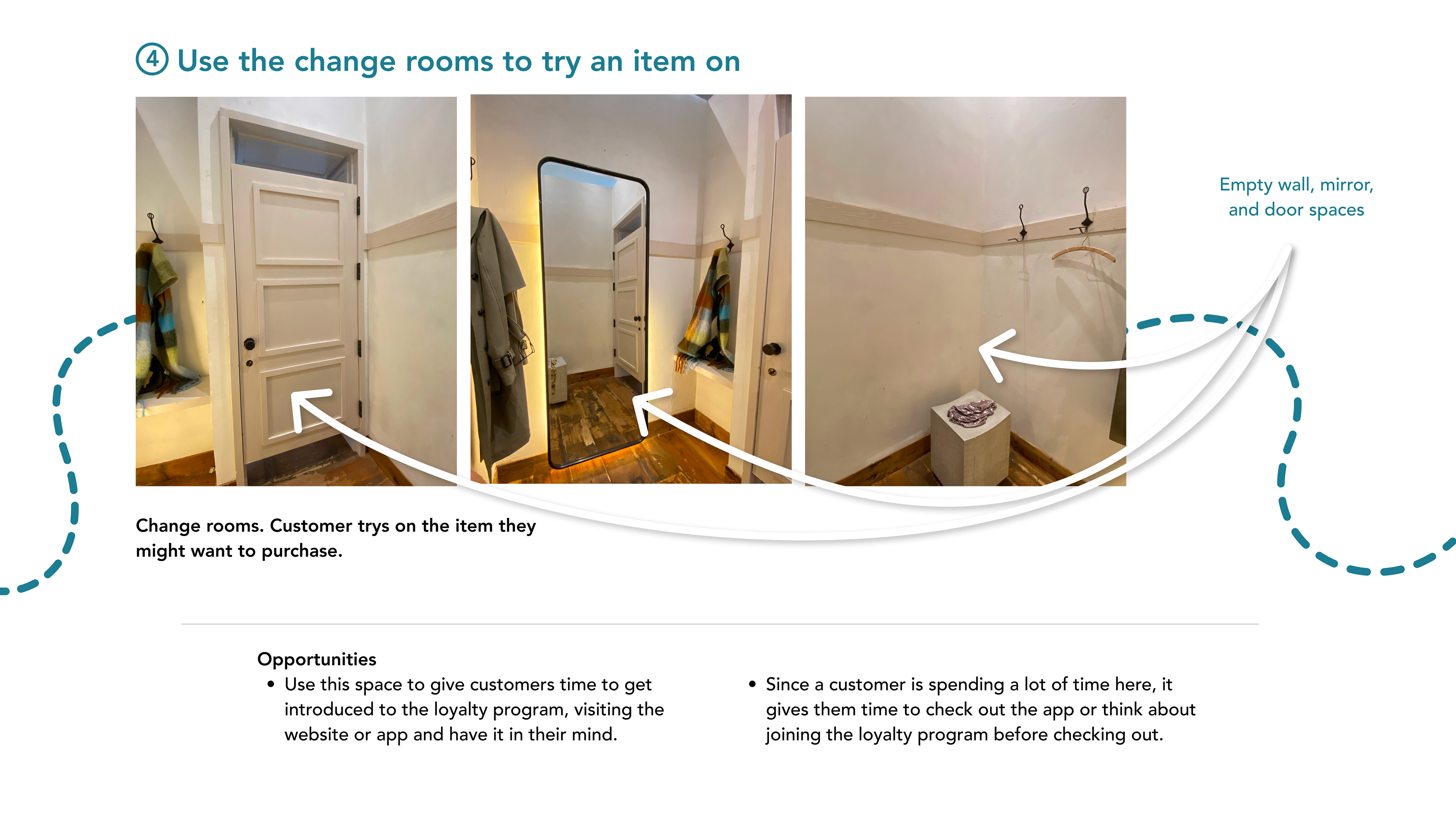
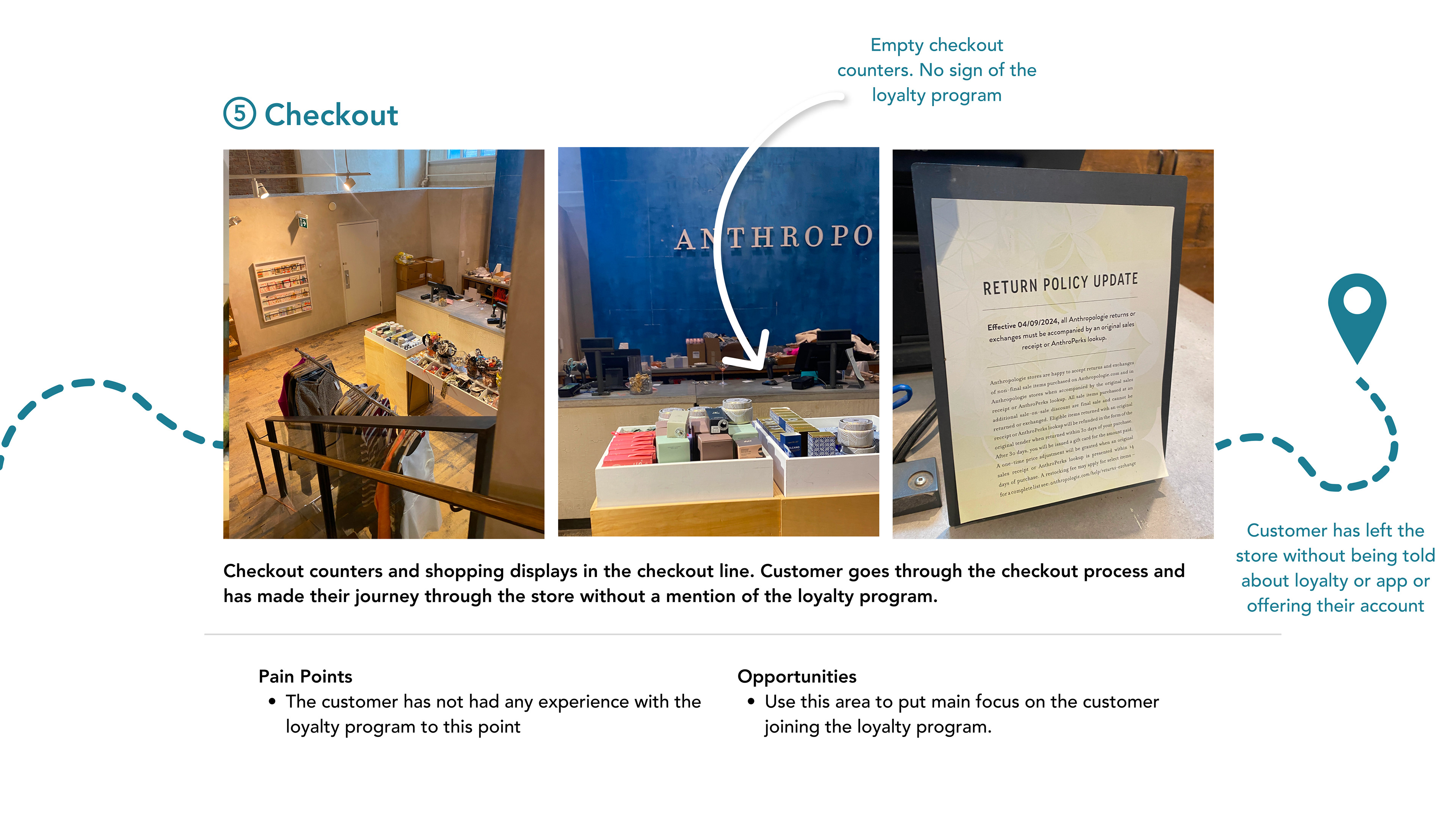
Overall, there was nothing around the store that mentioned Anthropologie having a loyalty program. Observing the checkout process made it clearer that it does not get mentioned at the checkout by a sales associate either. There was clearly a lack of visibility with the loyalty program in-store which is skewing customers from becoming online users. This lined up to be true with our heuristic evaluation, this made it obvious that there was a problem promoting the loyalty program both in-person and online.
Through interviews I discovered what user's wanted, which was personalized experience that makes them feel connected to the brand and business. They want to know and see they are getting rewarded for being loyal and that there is a goal to be working towards. So using what I learnt through the ethnography, which was that user's and customers shopping at Anthropologie are not using the loyalty program because its not the experience they want or expect from the brand. I could now come up with a solution that would allow for an increase in visibility and show user's/customers how their shopping brings both them and business value.
Opportunities & Recommendations
In-Store Opportunities & Recommendations
Why This Concept?
My recommendation is based in getting more customers online.
Anthropologie would go about doing this by displaying their loyalty program more prominately around the store such as the examples above. But also make the process at checkout relevent and easy for the customer.
Displays
Displays about the app or loyalty around the store:
• Informs the customer about visiting online
• Gives them the chance to sign-up on their own time
• Easy to install around store
• Cost effective
Customer tablet
• Let them view their purchase
• Prompt to sign up to the loyalty if the sales associate forgets
• Enter their information themselves so they know its correct.
Displays about the app or loyalty around the store:
• Informs the customer about visiting online
• Gives them the chance to sign-up on their own time
• Easy to install around store
• Cost effective
Customer tablet
• Let them view their purchase
• Prompt to sign up to the loyalty if the sales associate forgets
• Enter their information themselves so they know its correct.
Online Opportunities & Recommendations
Why This Design?
Users online need to see what they are getting from loyalty program and a reason to sign up with an account. So Anthropologie needs to Design a section in the ‘accounts’ where the loyalty program can be viewed and accessed
Using our findings from the online journey map we know:
• Our user does not like obstacles or popups
• Wants to be able to see what they are getting back from being loyal
Value In My Findings & Conclusion
My recommendations are an increase in visibility on both the in-person and online experience. Creating this visibility in-person will allow for more users to create accounts online and join the loyalty program. To add onto that, I needed to create a way to keep user's to continuously use the loyalty program. I sketched out a wireframe for a design in the 'accounts' section on the Anthropologie website that would include an an area where user's would be able to access their perks and offers.
This recommendation solves our problem found because the user (Persona) gets the experience they expect and want from a loyalty program. They know about it, have easy access to signup either in-store or online, and are aware about what they get from it and can now receive and view their personalized experience from Anthropologie.
And for the business, users will commit to joining the loyalty, becoming a reoccurring user, and purchase more often. Learning from our data found through interviews and ethnography, creating more visibility of the loyalty program will satisfy our user by creating larger incentive to shop with a loyalty program, making an easy and connected experience online and in-store, and showing our users they are important to our brand.
